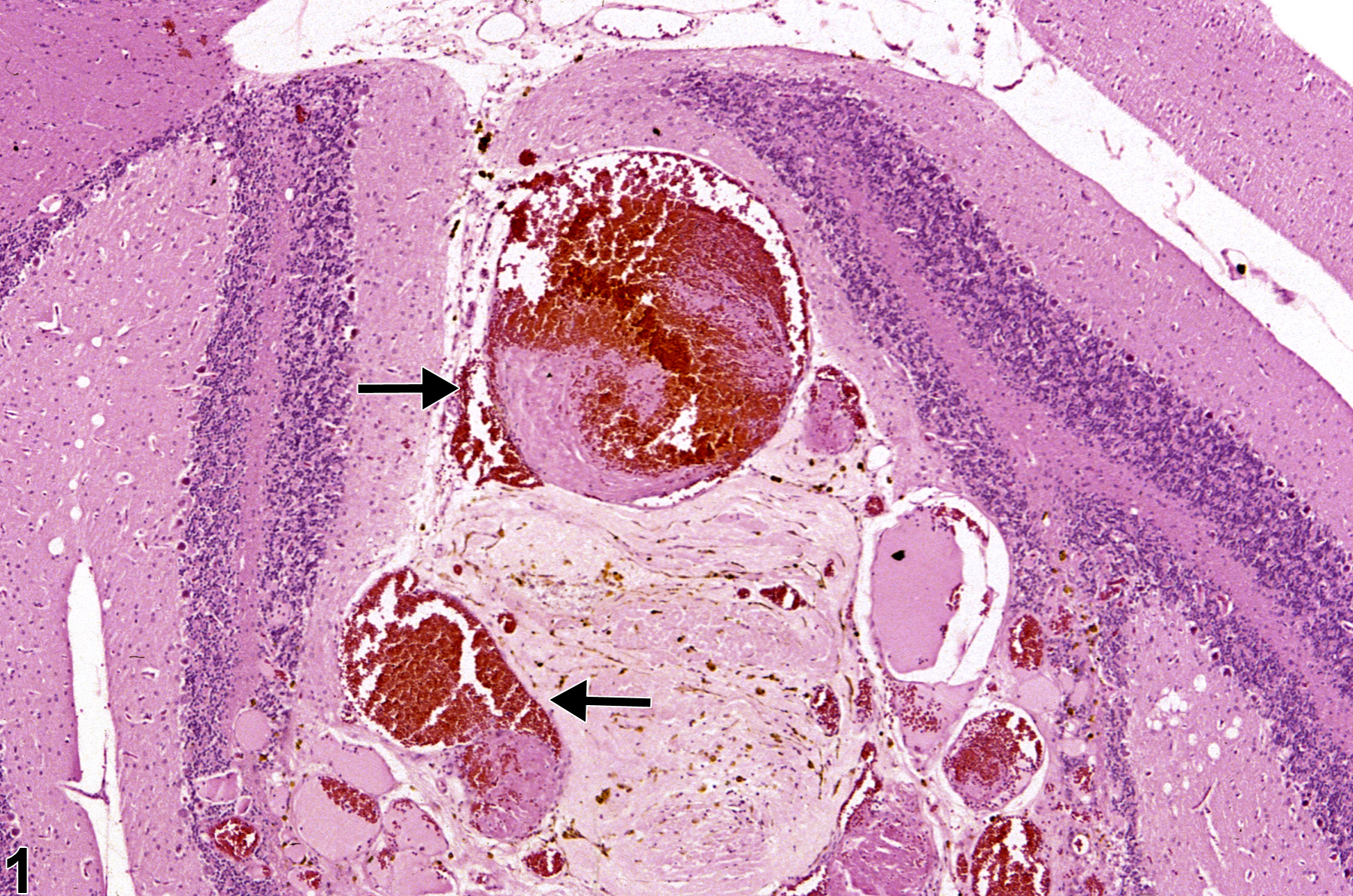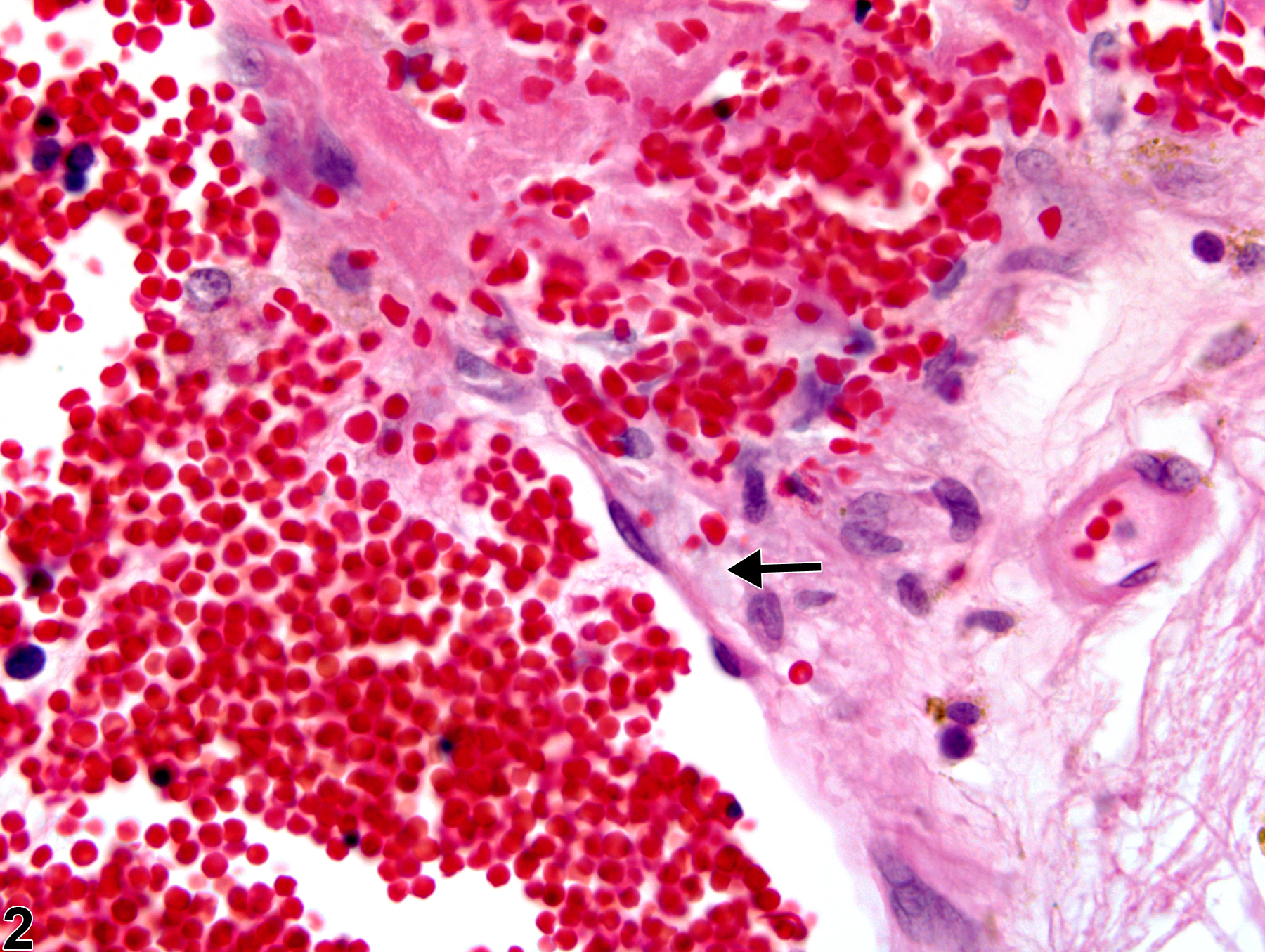Nervous System
Brain - Angiectasis
Narrative
Comment:
Figure 1 and Figure 2 show an example of angiectasis. The recognition of a focal excess of relatively normally configured vessels in a brain is the hallmark of spontaneous incidental angiectasis. Here there are several large angiectatic veins in the meninges of the cerebellum, and thrombosis (Figure 1, arrows) has occurred in some of these vessels. The probably turbulent blood flow in such interconnected abnormal sinusoid-like vessels leads to activation of the clotting cascade resulting in thrombosis. Figure 2 shows the same specimen as Figure 1 at higher magnification. Note the normal appearance of the endothelium. Differentiation of such vascular changes from that of hemangioma and hemangiosarcoma is important. In hemangiosarcoma, the tumor is compressive and infiltrative, and the vessels are of varied diameters, are mostly of a capillary nature, and, in the most malignant forms, have abnormal hypertrophied endothelial nuclei and spindloid stroma. A distinction between angiectasis and hemangioma should be attempted, although the distinction is not always obvious. Hemangiomas tend to be well-circumscribed, unencapsulated masses composed of tightly packed, dilated vascular spaces. Each vascular space is enclosed and lined by a single layer of normal-appearing endothelial cells aligned on collagenous septa, which are usually thin, although some have broad collagenous stroma. Angiectasis does not usually present as a well-circumscribed mass; the dilated vascular channels often course irregularly through the tissue.
Recommendations:
In NTP studies, the angiectasis is diagnosed when present and graded based on extent of the lesion. The subsite should be recorded.
References:
References not listed.

Incidental angiectasis in a cerebellar vein in a female F344/N rat from a chronic study. The arrows identify ectatic veins containing thrombi.



